Native Roots
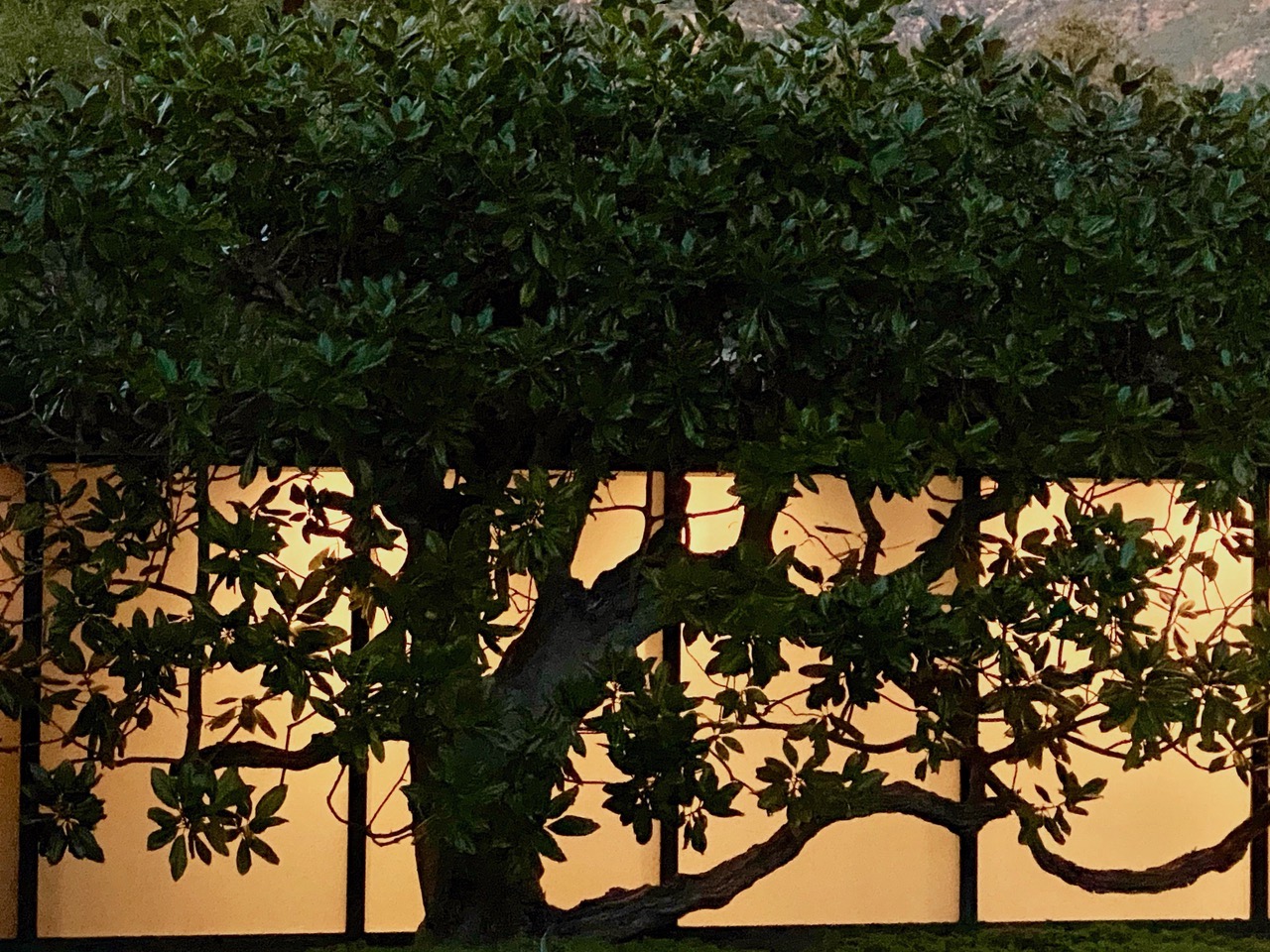
Sustainable landscaping doyenne Susan Van Atta is healing the local ecosystem one acre at a time…
It was Susan Van Atta’s birthday just after the presidential inauguration and she wanted to spend it quietly riding her bike on a nostalgic tour through “her” Carpinteria. She set off along the paths of the Salt Marsh Reserve (she helped designed the restoration 20 years ago in collaboration with UC Santa Barbara ) then caught the rustic bike path she helped create, pedaled past the state campground, the old tar pits, and the sea lion refuge, headed south through the Carpinteria Bluffs – the lush woodland her firm has been helping restore by removing invasive trees and weeds as well as building an eco-friendly network of trails, public open space, and unobtrusive parking. It was a ride filled with pride and memories. “Since before anybody really talked about ‘habitat restoration,’ we’ve been working on this coastal area with the city,” she mused. And more to come. “We’ve just completed a master plan for the Rincon Bluffs – 21 acres. Soon the city of Carpinteria’s coastal bike trail will take you all the way to Rincon.”
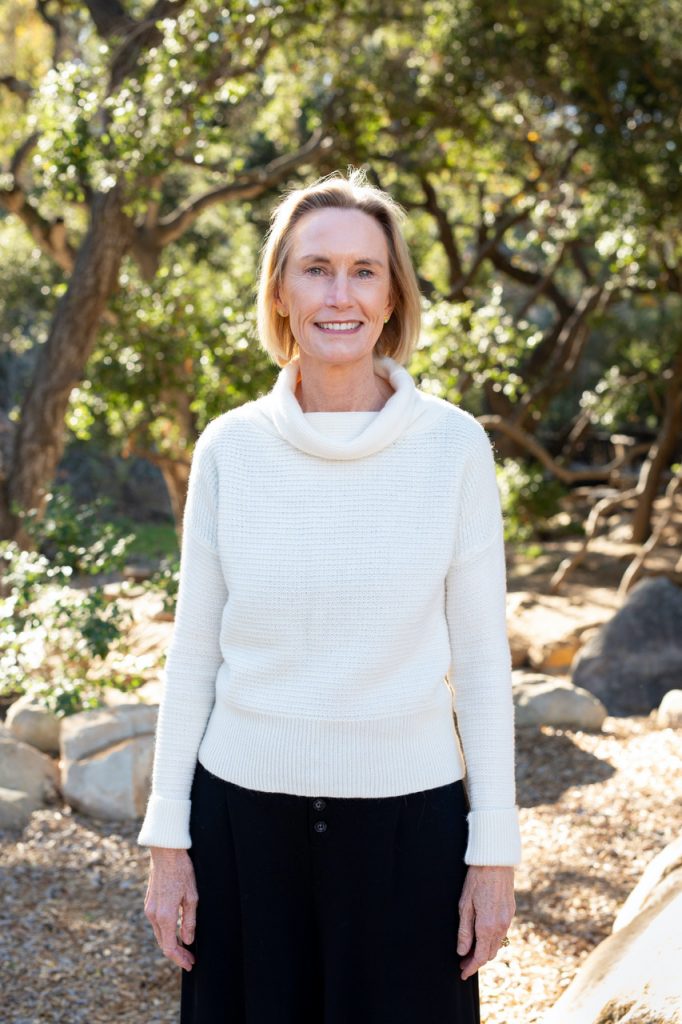
Days off like this are rare for Van Atta, who, during the past 30-plus years, has quietly become one of Santa Barbara’s most sought-after landscape architects. Her design and sustainability awards are so numerous that her website lists them grouped by year. She was selected by the American Society of Landscape Architects to receive one of its highest honors, election to the Council of Fellows.
“Susan is in the great tradition of Florence Yoch,” says Charles Birnbaum, founder and CEO of the Cultural Landscape Foundation in Washington, D.C. He’s known Van Atta since the early 1990s, when he was in Montecito to give a series of lectures and workshops about our local landscape treasures, including Val Verde and Lotusland. Birnbaum asserts that just like Yoch – renowned for gardens ranging from the Huntington Library to the set of Tara in Gone with the Wind – Van Atta “is a person of grace and sensitivity, sensitive to the bone structure, the history of every place she touches.”
While Van Atta has commissions all over Southern California, her most concentrated body of work is in Santa Barbara’s South County, where it might be a challenge to find important outdoor spaces that haven’t benefited from an environmentally conscious Van Atta transformation. What was once a six-acre beachfront parking lot at UCSB became the renowned Lagoon Park wetlands habitat with bioswales for natural water filtration, which Van Atta calls “ecologically intelligent design to balance aesthetics, function, and the environment.” She redid the rose garden at Lotusland, intuiting “What would Ganna Walska herself have done?” After preparation of a Cultural Landscape Master Plan, which included goals to preserve important Beatrix Farrand/Lockwood de Forest-designed Santa Barbara Botanic Garden, she was asked to sit on the organization’s board. At the Santa Barbara Museum of Natural History, she peeled back earlier makeovers that added sod and concrete, replacing them with restored woodlands, creeks, and riparian garden areas. In handing the project its annual award for public open space in 2019, Santa Barbara Beautiful hailed a “metamorphosis” that “imbues a quintessential sense of Santa Barbara.”
Project by project, Van Atta is one of several landscape architects – others include Kris Kimpel and Sydney Baumgartner – who are effectively helping to heal the local ecosystem acre by acre, responding to Santa Barbarans’ awareness of the destructiveness of climate change, the fragility of our coastal infrastructure, the poisonous nature of herbicides, and, particularly in Montecito, the enormous expense of water and its gross overuse. (According to county records, Montecito consumes an astonishingly wasteful 200 gallons of water daily per capita, compared with 75 gallons in Santa Barbara.) These environmental professionals’ efforts help promote an earth-friendly South County with native landscapes that attract beneficial insects, support soil health, are adapted to local weather, and support wildlife as well as people. About these goals for Santa Barbara, Van Atta is hopeful and forward looking. “People in Montecito and Santa Barbara are sophisticated about landscaping. They know the beauty of a woodland. They have seen native plants,” she says. “We have moved beyond the noises of mowing and blowing and big lawns that are expensive to water.”
Van Atta’s talent was noted as early as the 1970s by her internship advisor, later UCSB environmental planning professor, Paul Wack, who subsequently hired her to work for the county planning department. For decades since then, Wack had Van Atta serve as a guest lecturer in his class until he retired last year. “Susan is in a class by herself; she would come and just blow the students away,” he says. “Afterward, they all wanted to be landscape architects. She made them understand the connection between all of the different specialties, and how the landscape architect can combine science, culture, climate, and design. It’s all about sustainable systems.”
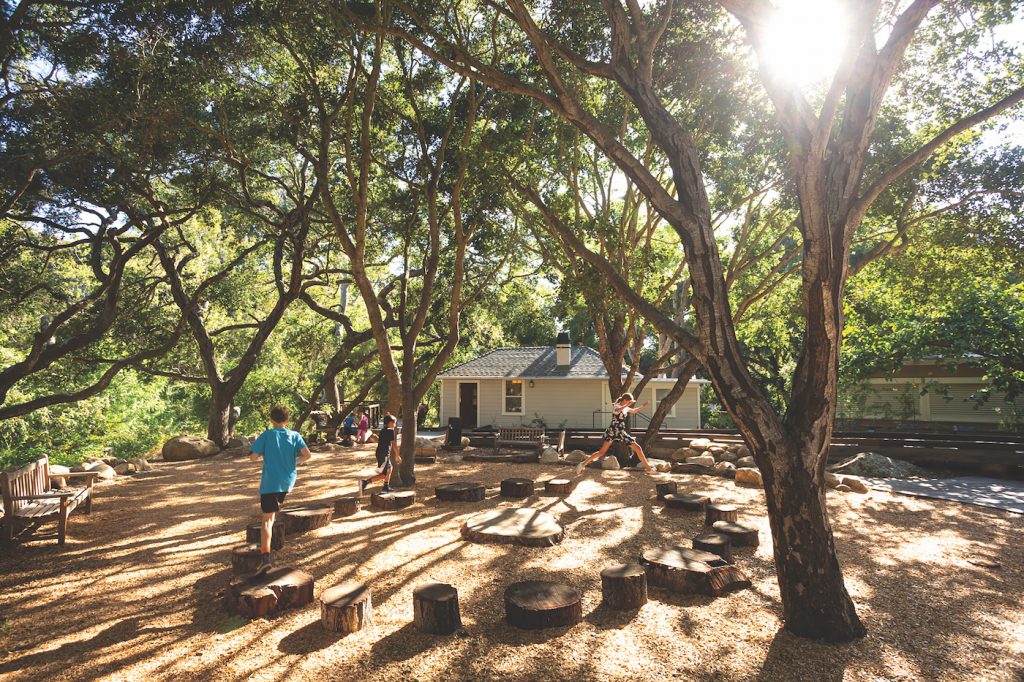
a metamorphosis at the Santa Barbara Museum of Natural History 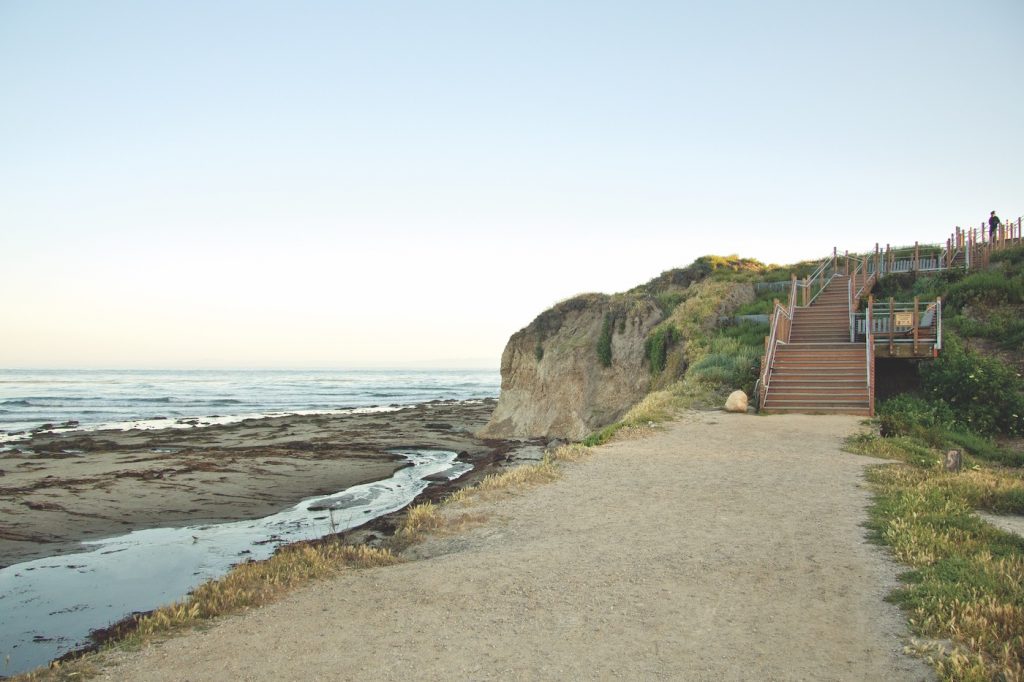
CSB’s beachside Lagoon Park, formerly a parking lot
The Four Seasons Santa Barbara Biltmore resort might be Van Atta’s best-known project, one in which she demonstrates that landscaping can be environmentally conscious and sexy. She cannily cut 50 percent of the hotel’s lawns around the perimeter and replaced them with bold-leaved and colorful regional adapted trees, palms, and shrubs to create a buffer to the street while disguising the chain-link fence. She visualized verdant garden rooms for public events and “green” privacy screening for guest rooms, punctuated by paths, pools, and plant accented corridors – a feat that involved thoughtful use of a tapestry of subtropical palms, trees, shrubs, and perennials from the world’s
Mediterranean-climate countries. “It’s lush, it’s colorful, it really teaches that drought-tolerant doesn’t look anything like a desert,” she says. Since its completion, the Biltmore has become a sort of living billboard for drought-tolerant landscaping, a place where visitors are constantly taking photos of the plant combinations and asking staff, “What is the name of this plant or that tree?”
Much of Van Atta’s oeuvre, though, eschews “come hither” features in favor of carefully balancing subtle aesthetic pleasure with solid environmental rigor. It’s a consequence, she says, of being both a scientist and a designer – she followed her UCSB environmental studies degree with a second degree in landscape architecture from Cal Poly San Luis Obispo – a duality that’s very much a part of her own life. Van Atta and her architect spouse Ken Radtkey of Blackbird Architects reside in a LEED Platinum home they designed in Montecito’s Sycamore Canyon; it has a 10,000-gallon water collection system, an energy-saving “green roof,” solar trellises, an acre of native California landscaping, and more. Conscious of our area’s vulnerability to fire, the couple milled a grove of eucalyptus trees they removed from their property and used it to create everything from garage and front doors as well as all the trim, including shelves, stairs and some furniture. Coyote House, as they call it – where they raised two sons – is both a laboratory and a quiet refuge for enjoying the views, a drink, and a game of bocce. She says, “We rarely talk about work at home unless we have to.”
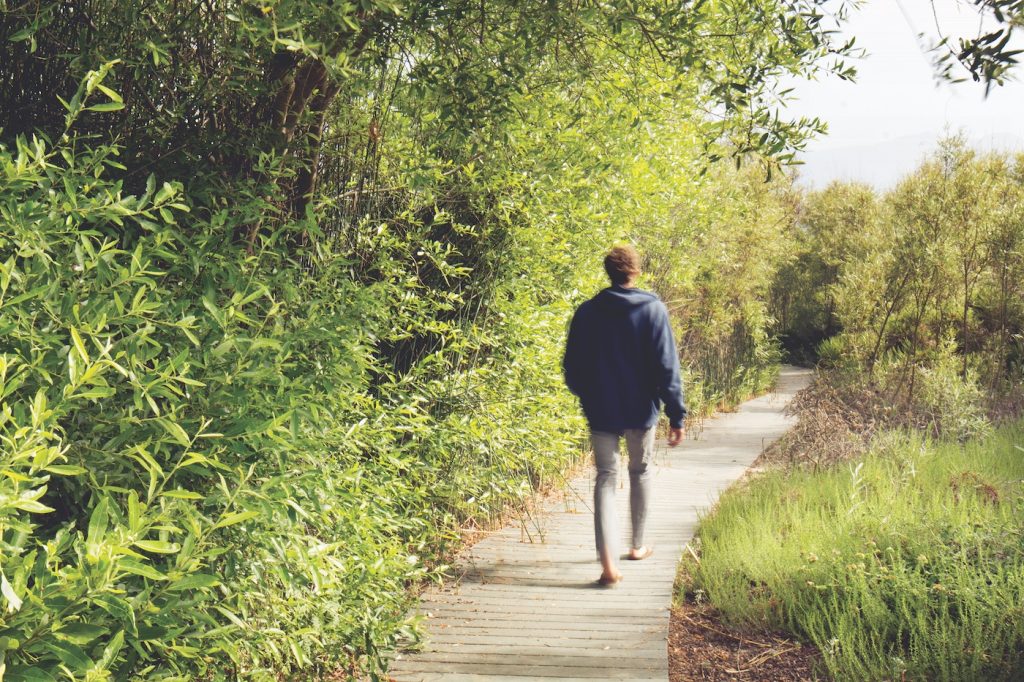
The pair was introduced in the 1980s by Jon Clark, now president of the James S. Bower Foundation, when all were involved in the Community Environmental Council, the Santa Barbara nonprofit that works to combat the causes and effects of climate change. Clark and Radtkey were roommates, and it was an easy connection, he says, because “they were both very smart, very kind, quiet, thoughtful, super hardworking, type-A people.”
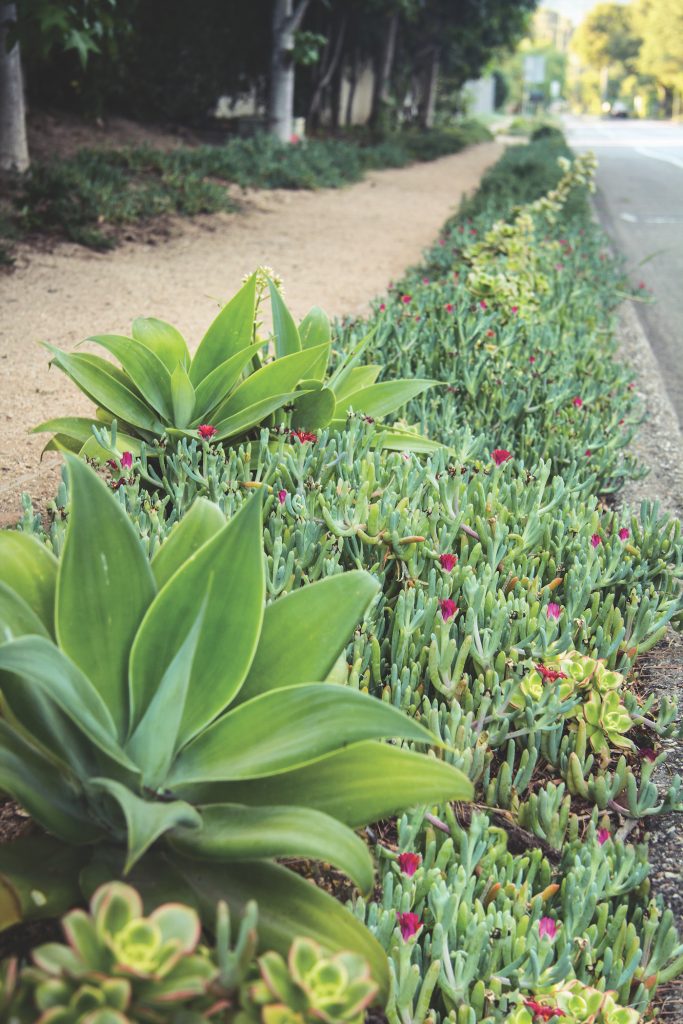
Many of the elements Van Atta has learned over the years imbue her favorite designs today – trellises and arbors with espaliered fruit trees. Venerable California coastal or live oak trees underplanted with a wide variety of native vegetation. Tree-shaded seating groups with wood, stone, or concrete benches from which meandering natural paths and walkways lead to tranquil ponds. Serene areas of native California grasses. Rainwater gardens and bioswales that treat and take best advantage of rainwater while appearing to be natural creeks and ponds, yet central to the philosophy that water conservation should be on the mind of every Santa Barbaran.
One of Van Atta’s initially controversial commissions involved designing Montecito’s first Safe Routes to School pedestrian walkways for the public works department after the county was unable to muster support for mandatory curbs, gutters, and sidewalks. At the time Montecito Union School parents acquired a grant for a route along San Ysidro Road so MUS students could walk safely to and from school, yet the community rebelled at the idea of this intrusion into Montecito’s rural setting. “I proposed an alternative made of decomposed granite bordered by succulents, which we installed along the west side,” she says. “It wasn’t a sidewalk, and it required no water.” As a result of this precedent, the Montecito Trails Foundation and the Santa Barbara Bucket Brigade have gone on to construct similar pedestrian paths along several of Montecito’s busiest byways.
Another personal favorite is Montecito’s Westmont College, where she has served as designer-in-residence for two decades. The landscape master plan called for native planting within an overall context of native oak woodlands while preserving the historic core. Students now enjoy a parklike pedestrian core that encourages them to leave their cars at the dorms and walk from place to place, sit outdoors to study, and learn to appreciate the area’s unique ecology. “In the Montecito foothills, it would be unnatural to see a super-mowed, super-trimmed, edged landscape,” says Randy Jones, director of campus planning at Westmont. “Our site blends seamlessly into the foothills beyond our campus.”
A typical day for Van Atta is spent juggling multiple site visits with field meetings and research. She sometimes returns phone calls by texting photos to let callers know why she cannot answer, such as a recent one she sent from the Santa Barbara Bowl (another client for two decades). The image shows she’s occupied with pressing green leaves into freshly poured cement for the Bowl’s newest venue. After Van Atta spends time with a new client to begin a commission, her next step frequently involves determining the cultural importance of the site or setting. “Especially in Montecito, with important history and culture,” she says, “I strive to do thorough research to respect those elements as much as I do the environment.” She’s had the privilege of poring through the books, drawings, and letters of eminent design predecessors such as Beatrix Farrand and Lockwood de Forest for her restoration at the botanic garden, and Farrand for the landscape at Occidental College in Los Angeles.
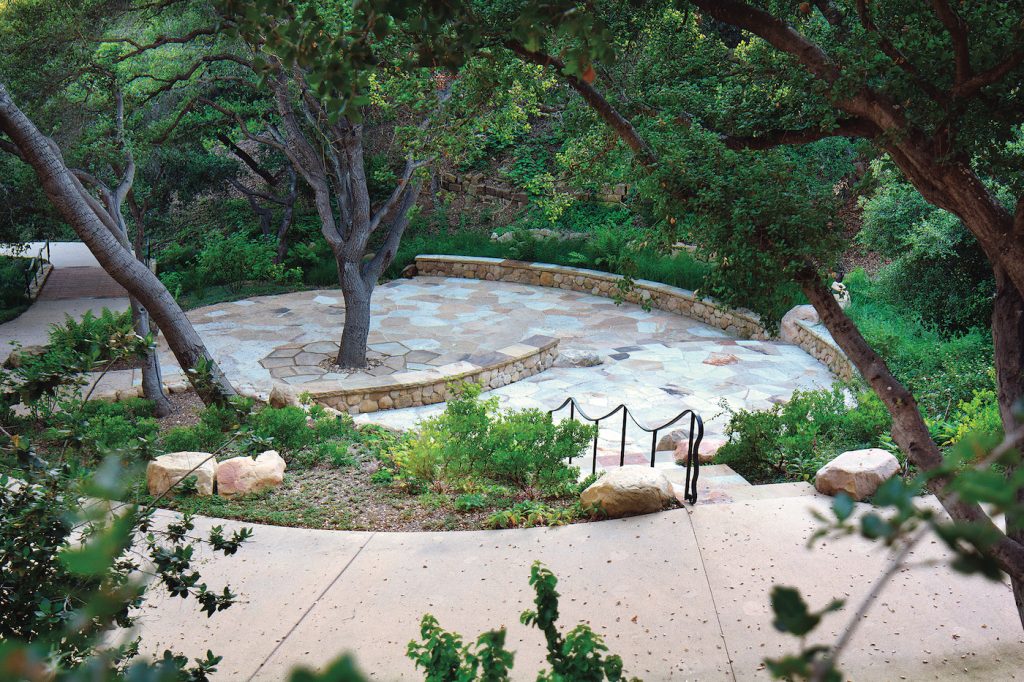
Given this penchant for landscapes with pedigree, it was almost kismet a decade ago when Van Atta and her architect spouse met Bostonians Mark and Michelle Dishop after they bought a three-acre property on San Ysidro Road that held a midcentury modern A-frame house overlooking a pond. “We liked the wraparound windows,” says Michelle. “We thought it would be a nice place to be in the winter.”
They reached out to the designers since “we were one of the largest water users in Montecito because the whole property was planted in grass,” says Mark. “It was absurd. There was grass all the way up to the trunks of the oak trees. You couldn’t walk on it. It required constant mowing.” Through the designers’ research, the Dishops learned they had struck a lode of Montecito gold, so to speak. Their house was a late commission by Santa Barbara’s revered first female architect and associate of George Washington Smith, Lutah Maria Riggs. Moreover, the garden was designed by renowned California landscape architect Thomas D. Church.
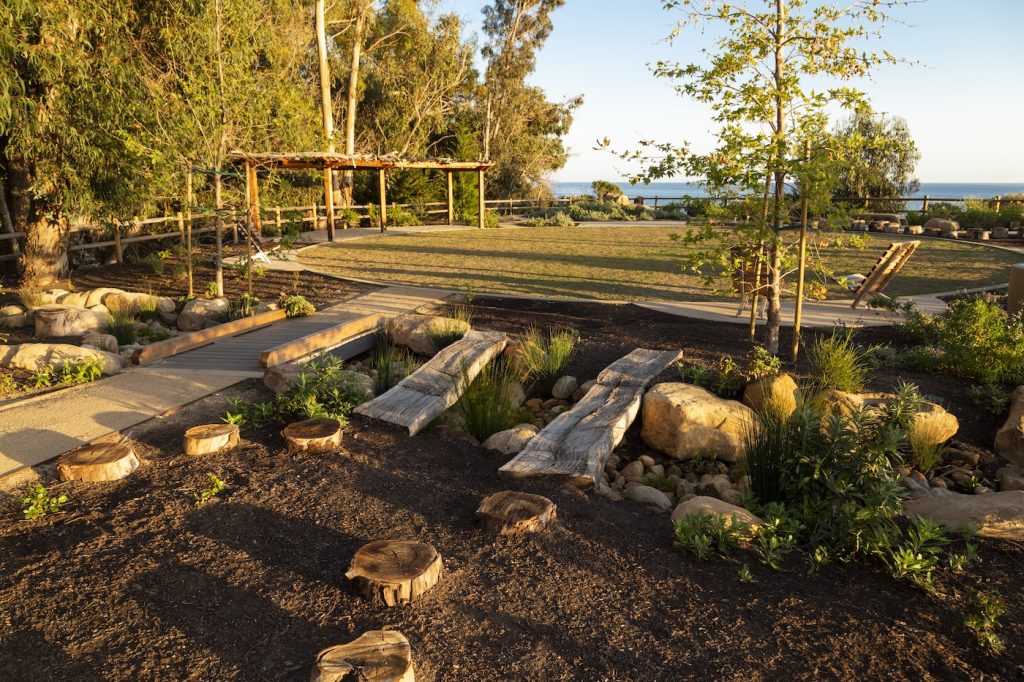
Van Atta’s take was that “whoever came in and put lawn everywhere probably had no idea it was a Thomas Church garden, or they didn’t care.” Her solution began with a visit to the Church archives at UC Berkeley, where she found his own photos, drawings, and descriptions of the original garden. She recommended that the Dishops committed “to take it back to what it was,” she says. Today, the modernist yet tranquil acreage boasts a restored pond, orchards, herb gardens, patios, play areas, and decomposed granite pathways that travel all around the property. Van Atta shows off a long-neglected espaliered magnolia tree that dates from the time of Church, which she carefully pruned, back-lighted, and made into an honored garden feature. Radtkey’s architectural renovation gave the house even more of an indoor-outdoor feel. The design duo, says Mark, “made it our home. With Susan’s choices of California plants that don’t require much water – and a design more in keeping with the original Church concept and more appropriate to our climate – we have substantially cut our water use and our water bill.”
Van Atta’s latest commissions include a redesign of the bluff-top, four-acre Lookout Park at Summerland Beach. There are stylized pergolas made of driftwood that Van Atta’s team asked to be collected from the shore below, a sandbox with – at the community’s request – artwork paying homage to the town’s history in the oil industry, natural stone benches, decomposed granite trails, and concrete tables for ping-pong. A natural drainage system is composed of boulders and rocks accented by riparian trees and plants that are suitable for treating stormwater runoff from the parking lot. Plants unique to the Channel Islands surround the play and activity features provided.
This fall, Van Atta hopes to continue a collaboration with the Santa Barbara Botanic Garden and Channel Islands Restoration for the restoration and protection of Montecito’s Chumash Native American burial site, known as Hammond’s Meadow Open Space and Shalawa Meadow (the latter referring to a bustling village that once stood there). It’s on the National Register of Historic Places and will require satisfying diverse stakeholders including the Barbareño Band of Chumash Indians, the Santa Barbara County Parks Department (the site’s owner of record), the Channel Islands Restoration nonprofit organization, and Sea Meadow, the community of 27 luxury beach homes that surrounds the site.
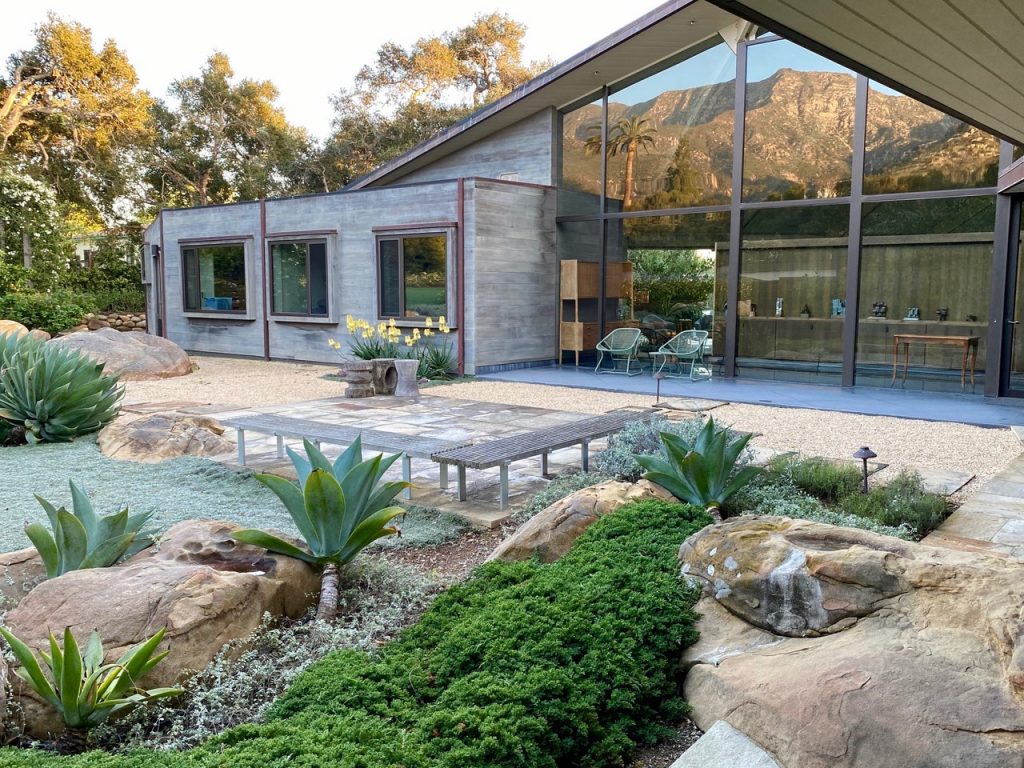
Because the open space includes four acres adjacent to the beach, it attracts curious daytime visitors who unknowingly trample over what is considered sacred ground. At night, problems are caused at the unlighted, unguarded property by vandals, treasure hunters, and campers building bonfires. A public trail leads from the train tracks to the site, which was dedicated to the County of Santa Barbara Parks Department at the time of the subdivision.
While Van Atta’s landscaping plan can’t solve all, it does address issues of horticultural history, sensitivity to native plants, and protection of Chumash sacred artifacts buried underground. She identified two Chumash-era natives that are still growing at the site – jimsonweed (Datura wrightii) and lemonadeberry (Rhus integrifolia). These would be retained and joined with about 30 tall and medium grasses, shrubs, and perennials, all natives to the coastal region. California coast live oaks and Western sycamores, species that would have been growing at the coastline centuries ago, would replace the myrtle (Myoporum) on the site’s southern border. Under a new top dressing of several inches of soil, Van Atta would “cap” the burial ground with a layer of sand and wire mesh to deter both gophers and treasure hunters. Because it’s a burial site, chemical herbicides can’t be used to kill weeds and weed seeds; instead they would be “solarized,” a process that involves laying out black plastic to enhance the heat effect of the sun’s rays.
Will this project succeed in satisfying all the stakeholders? Given the complex political, protection, and policy issues of the site, it’s likely to be one of her most challenging commissions. Nonetheless, the project, says attorney David Anderson, an Occidental College trustee who lives nearby, will likely be better off due to her thorough research, her respectful combination of native vegetation, and her willingness to combine environmental sustainability with a respect for history. Says Anderson, who has hired Van Atta for several previous projects: “I think she’s brilliant in her knowledge of what feels right in a particular setting.”







